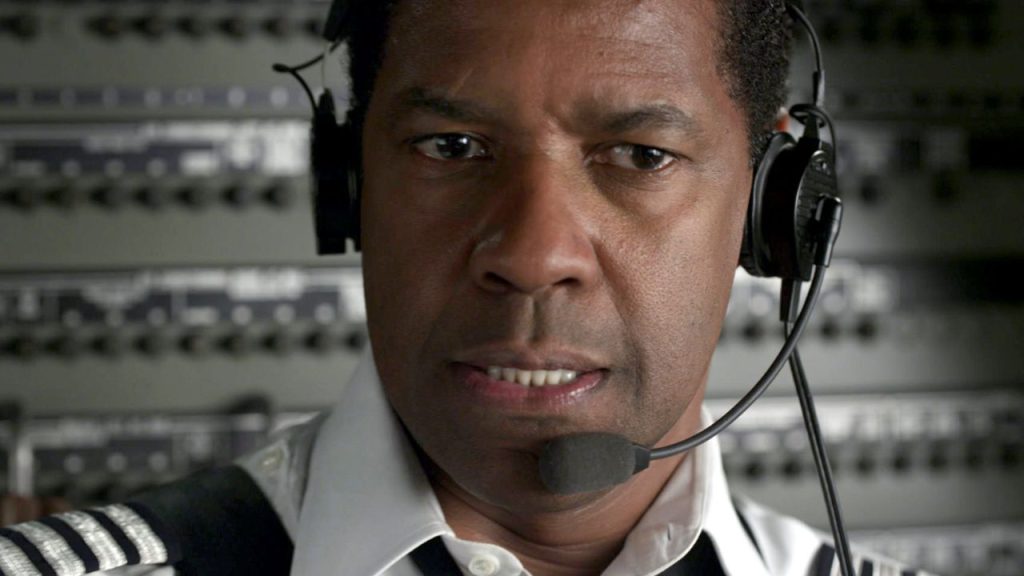The movie Flight, released in 2012, is one of the best movies based on flying in the last two decades. It has been widely appreciated for its screenplay, intense flying sequences, and showing aircraft flying upside-down on the big screen for the first time.
However, the upside-down flying scene astounded many pilots and questioned its validity. Many fans believe the movie is based on a true story, while some consider it a fictional story.
So, let us see if the movie is a fictional story or a true story. Before we conclude if the movie is based on a true story or not, let us discuss the movie plot.
Table of contents
What Is the Plot of the Flight Movie?

The story is about an alcoholic and drug addict Captain Whip Whitaker of the SouthJet airlines. One day he snorts cocaine to wake up after a sleepless night to fly a SouthJet Flight 227 from Orlando to Atlanta during a rainstorm.
The aircraft faces severe turbulence during take-off due to stormy weather. The journey seems to be smooth; however, the airplane goes into a steep dive due to a mechanical breakdown midair.
Whitaker somehow miraculously controls the aircraft by flying it upside-down to save the lives of almost all the passengers by making a safe crash landing.
Whitaker is hailed as a hero but soon found guilty of being intoxicated with cocaine and alcohol while flying during an investigation.
The movie depicts Whitaker’s experience dealing with the plane crash and the crash of his life and relationships, both caused by his addiction.
Now that we are familiar with the plot. Let us see if the events that took in the movie are fictional or inspired by a real-life event.
Is Flight Movie Fiction or Inspired by a True Story?
Although the movie is fictional, some part of the movie is inspired by the actual crash of the Alaskan Airlines Flight 261 that happened on January 31, 2000. Flight 261 crashed due to a broken jackscrew and resulted in 88 casualties without any survivors.
The upside-down flying scene and some dialogues in the movie are taken from the CVR transcript of the actual event. The transcript reveals the pilots’ continuous attempts to regain control of the aircraft.
At one point, unable to raise the nose of the plane, they attempted to fly the aircraft “upside-down” to regain its control.
Unlike in the film, the aircraft could not recover and descended inverted and nose-down about 18,000 feet in 81 seconds in the pacific ocean resulting in the death of all the passengers, pilots, and cabin crew.
The movie plot is fictional. Unlike the actual crash, the pilot of the movie miraculously saves 96 out of 102 people by flying the plane upside-down and is hailed as a hero until the investigation reveals that he was high on cocaine and drunk during the journey.
The film deals with more than just a plane crash, and it shows how a drug and alcohol addicted man adapts to become a better parent for his son after experiencing a crash in his life.
Robert Zemeckis, the director of the movie, revealed that the movie is purely fictional and the reason that made him direct this film in a telephonic interview.
During his interview, Robert Zemeckis admits that the great screenplay of the film compelled him to direct the film Flight. Zemeckis’ interview reveals that the film draws from different incidents involving airplane malfunctions and crashes. However, its plot is purely fictional and not based on a true story.
What Happened to the Pilot of the Movie Flight?
The pilot, Whip Whitaker, was found guilty of being intoxicated while co-piloting a domestic flight and was sentenced to 16 months in federal prison. During his imprisonment, Whitaker quit drugs and alcohol to become a better person and works on rebuilding his relationship with his son.
After completing 13 months of imprisonment, Whitaker gave a lecture to his group of fellow inmates about how he gave up drugs and alcohol. He also revealed how happy he is with his new sober life and does not regret doing the right thing.
After 16 months, Whitaker returned to the cockpit on his 60th birthday and retired as a 747 captain.









